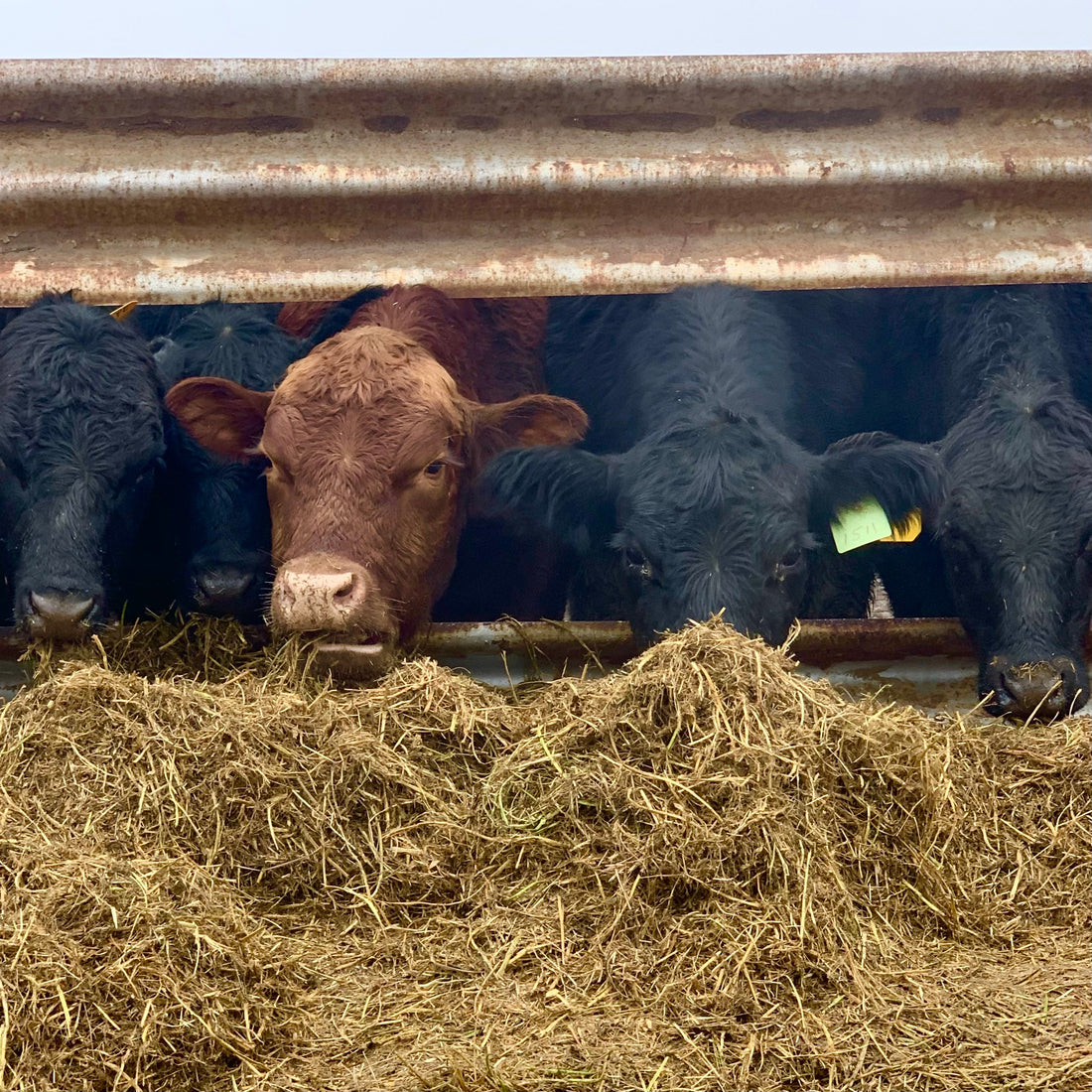
Should I Order Grass Fed Beef or Grain Fed Beef?
Lone Crow Ranch LLCShare
If you aren't sure which type of beef is right for you, here's the information you need to help guide your decision!
Let's start at the beginning. All of our cattle are raised the exact same way until they are about a year old. They’re born, they graze on grass, and are free to lick on supplemental minerals. The split happens later, when we segregate them to “finish” them—aka, what they eat in the last few months before they head to butcher. Grass fed cattle keep on eating grass or hay their whole lives, while grain fed cattle slowly get introduced to our finishing ration. Our finishing ration consists of grass (all cattle need grass for roughage in their diet), apples, non-GMO wheat screenings and bakery feed, potatoes, and alfalfa.
All of our feeds are individually nutrition tested, and rations are meticulously planned with our certified animal nutritionist to make sure our cattle are eating well! Our cattle get a custom mineral package (kind of like a multivitamin, for cows!) with their feed, and during pasture season we put their minerals into buckets on the pasture that they can freely lick as they please.
Our cattle eat better than we do...
Beef Taste: Taste is an individual concept, however, in general you can expect a more "buttery" and rich taste in the beef from grain fed cattle. You will see better marbling, and the fat will be white. Grass fed beef will be leaner, with less marbling and less fat overall. The fat will have a yellow tint, from the high consumption of beta-carotene in the all grass diet. Often the taste is described as more "gamey", similar to venison.
Beef Texture: Grain fed steaks are more tender than grass fed steaks, primarily due to the marbling from the natural sugars and starches in the finishing ration. Grass fed steaks can be tender, but they require a little extra care in cooking! Making sure the steaks are not overcooked will help them retain moisture and tenderness, so don't forget about them on the grill! I've found when slow-cooking roasts, the grain fed are more forgiving and the fat helps to keep them tender and buttery, whereas the grass fed roasts often require me to add additional oil and shorter cooking times to keep from being tough.
In summary, no matter which type of beef you choose, you can be sure your cattle are raised well, humanely handled, and fed nutritionally balanced feeds!
If you have any further questions, feel free to reach out to me (Jen) via email or phone on the contact page!
